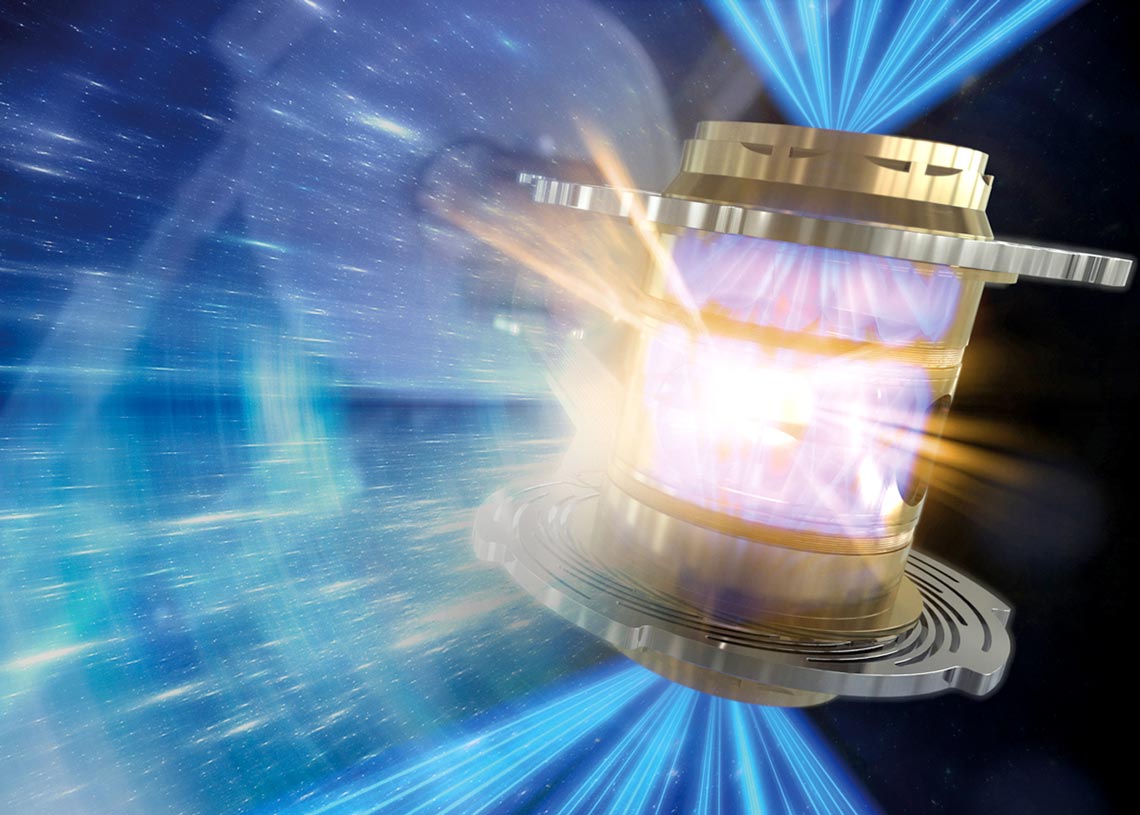On the morning of December 13, while people were preparing for the end of year festivities, directors of the US Department of Energy in Washington, DC, held a press conference to announce what they called “one of the most impressive scientific feats in the twenty-first century.” A week earlier, on December 5, an experiment carried out at the Lawrence Livermore National Laboratory (LLNL) in California had for the first time managed to produce more energy than it consumed via nuclear fusion, the same reaction that makes the sun shine and is the basis of thermonuclear weapons, popularly known as hydrogen bombs. The name physicists use for this situation, when the energy gain is greater than the expenditure, is fusion ignition.
All previous attempts to produce nuclear fusion more efficiently had run into the same major obstacle, regardless of the method chosen: the energy spent to create the reaction was greater than the energy it produced. This limitation was—and still is—the great Achilles heel of nuclear fusion as an alternative source of clean energy for humanity.
The experiment in California was carried out under special conditions that cannot be replicated anywhere else in the world and produced modest results in terms of the amount of energy generated. Ignition by nuclear fusion was achieved at the National Ignition Facility (NIF), an LLNL laboratory that was built roughly ten years ago, costing US$3.5 billion. It is the largest and most powerful facility in the world when it comes to generating laser beams. The NIF scientists have been promising since 2012 that fusion ignition is achievable, and at the end of last year they finally delivered.
Nuclear fusion was achieved at the NIF lab using a set of 192 laser beams. All this light was concentrated and directed at a small metal cylinder containing a plastic capsule the size of a small pea. Inside this capsule were 150 micrograms of two isotopes (varieties) of hydrogen, the most abundant chemical element in the Universe: deuterium, the nucleus of which has one proton and one neutron, and tritium, which has one proton and two neutrons. Suddenly heating up the cylinder caused a spectrum of light to be emitted (called blackbody radiation), which uniformly raised the surface temperature of the capsule to 100 million degrees Celsius (°C), about 10 times hotter than a star performing fusion. This huge burst of heat made the capsule explode, generating a shock wave that compressed the mixture of deuterium and tritium, resulting in nuclear fusion.
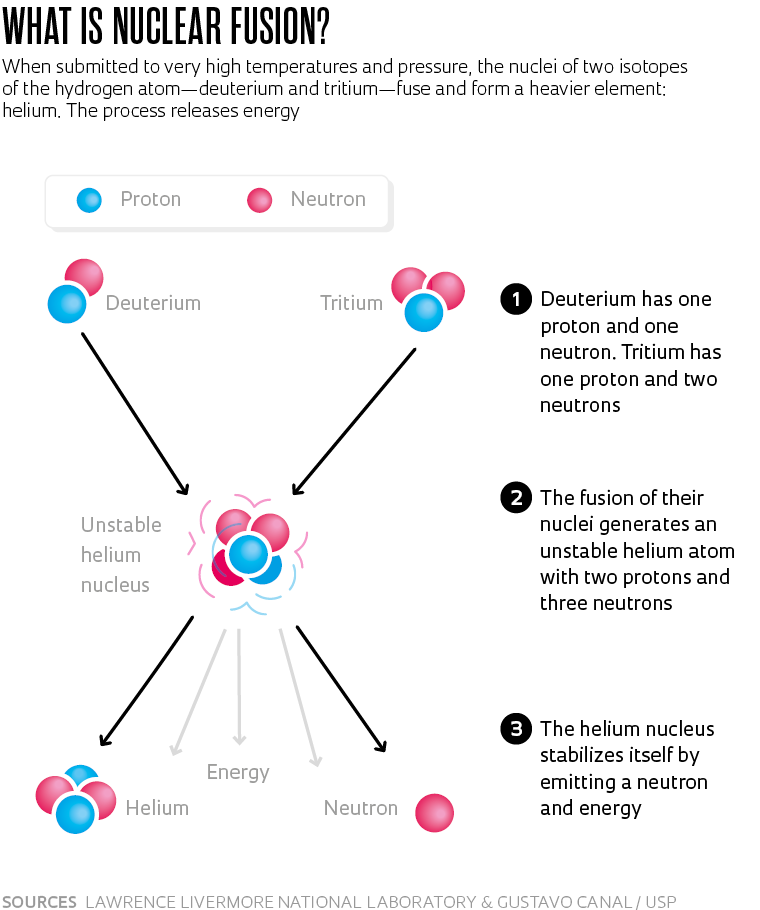
The experiment produced 3.15 megajoules (MJ) of energy, 50% more than the lasers aimed at the cylinder. All this occurred in mere billionths of a second. “The amount of energy generated is enough to boil around 10 liters of water,” says Gustavo Canal, a specialist in nuclear fusion from the Institute of Physics at the University of São Paulo (IF-USP). “The importance of this experiment was not to demonstrate that we can use laser reactors to achieve nuclear fusion on a large scale. That would be a very expensive and inefficient way to stimulate the reaction. The point was to show that it is possible to perform fusion ignition in a lab. It was proof of concept.”
Stars use nuclear fusion to generate their own energy almost inexhaustibly. The reaction, which occurs under extreme temperature and pressure conditions, forces deuterium and tritium nuclei to fuse together. When they merge, they form a heavier element (helium), also called an alpha particle, and release energy at the end of the process. The helium nucleus has two protons and two neutrons. A neutron that escapes from the fusion of deuterium and tritium is also released into the environment at the end of the reaction (see diagram).
For more than 70 years, humanity has been trying to master this process for peaceful purposes—to generate energy without polluting the environment or using finite natural resources. Fusion emits no greenhouse gases and unlike the nuclear fission reaction used in atomic power plants, it only generates a small and transient amount of radioactivity. “Earth has almost infinite and renewable sources of deuterium, which can be found in the water of our lakes and oceans. Tritium, meanwhile, can be generated during the fusion reaction through interaction between the neutron and lithium,” says José Helder Facundo Severo, head of the Plasma Physics Laboratory at IF-USP. “But despite recent advances, it is still going to take decades more of research to one day possibly make nuclear fusion a viable energy source for society.”
Before Severo, the person in charge of USP’s Plasma Physics Laboratory was Ricardo Galvão, the former director of the Brazilian National Institute for Space Research (INPE) who was appointed president of the Brazilian National Council for Scientific and Technological Development (CNPq) in January (see page 16). Brazil is the only country in the Southern Hemisphere with tokamaks, the machines used to create nuclear fusion through magnetic confinement of a deuterium and tritium plasma. The largest of them—which is small compared to others around the world—is located at IF-USP’s Plasma Physics Laboratory.
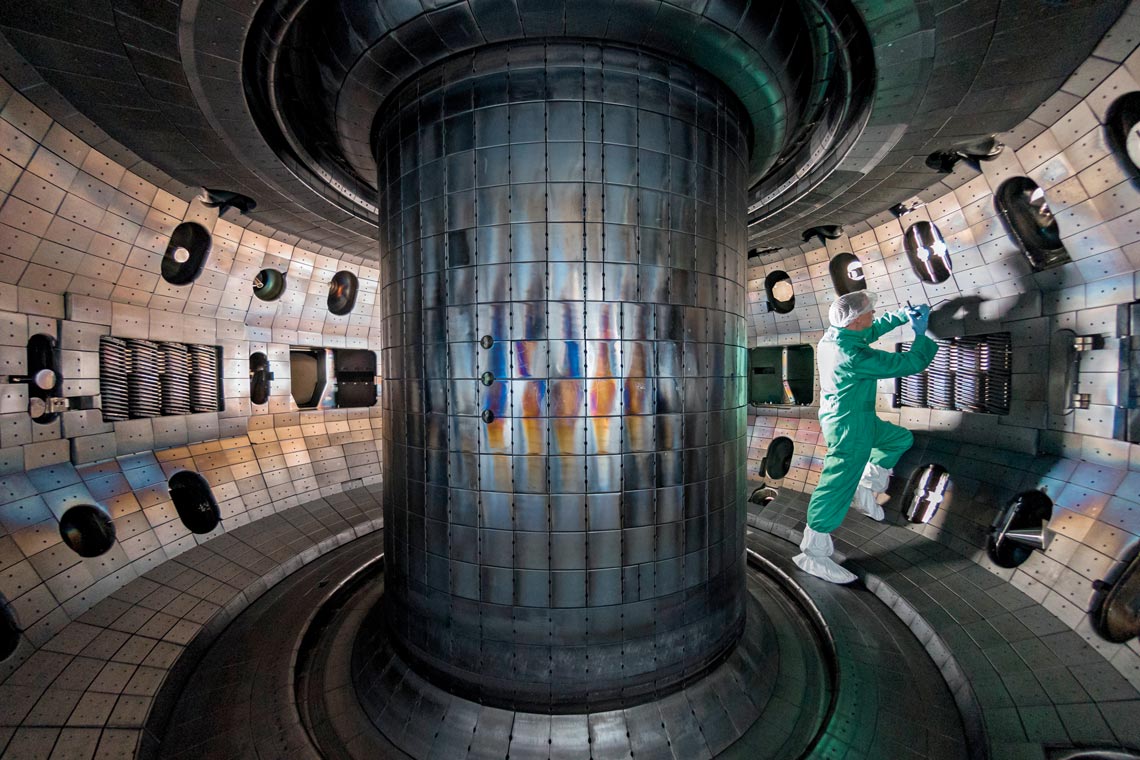
General AtomicsTokamak nuclear fusion reactor in San Diego, USA, operated by General AtomicsGeneral Atomics
The military has been working on nuclear fusion, even uncontrolled reactions, since the first hydrogen bombs were invented in the 1950s, thousands of times more powerful than the conventional atomic bomb, which works through fission by breaking apart the atomic nucleus. It is no coincidence that fusion ignition was first achieved in a military research complex. Independent physicists not associated with the NIF point out that the energy gained from nuclear fusion in the California experiment took place under extremely specific conditions that are unlikely to be usable in a civil setting and cannot be reproduced in other facilities.
One example of these difficulties and limitations is that the NIF equipment needs to run for eight uninterrupted hours to carry out an experiment like the one described in December 2022. This means that at its current capacity, even if it could run for 24 hours straight, it would only produce enough energy to boil 30 liters of water.
Mark Herrmann, director of the NIF’s weapons design and physics program, admitted in a press conference at the end of 2022 that mastering nuclear fusion for commercial energy production is still a long way off. “The NIF was not designed to be efficient,” Herrmann said. “It was designed to be the biggest laser we could possibly build to give us the data we need for the nuclear stockpile research program.”
Due to restrictions on testing bombs that use nuclear fusion, military research in this area of physics is essential to the improvement and maintenance of stockpiles of this weapon type. While working at Princeton University in 2016, Gustavo Canal was invited to give a lecture at the NIF. They asked him to bring his presentation on a pen drive. “You can’t take your own computer into the facility,” says the USP physicist. “I had an escort at all times, even to go to the bathroom.”
One criticism some researchers have made of the NIF experiment is that saying more energy was generated than spent requires some caveats. The amount of energy the set of lasers applied to the deuterium and tritium capsule was 2.05 MJ, while the consequent fusion reaction produced 3.15 MJ.
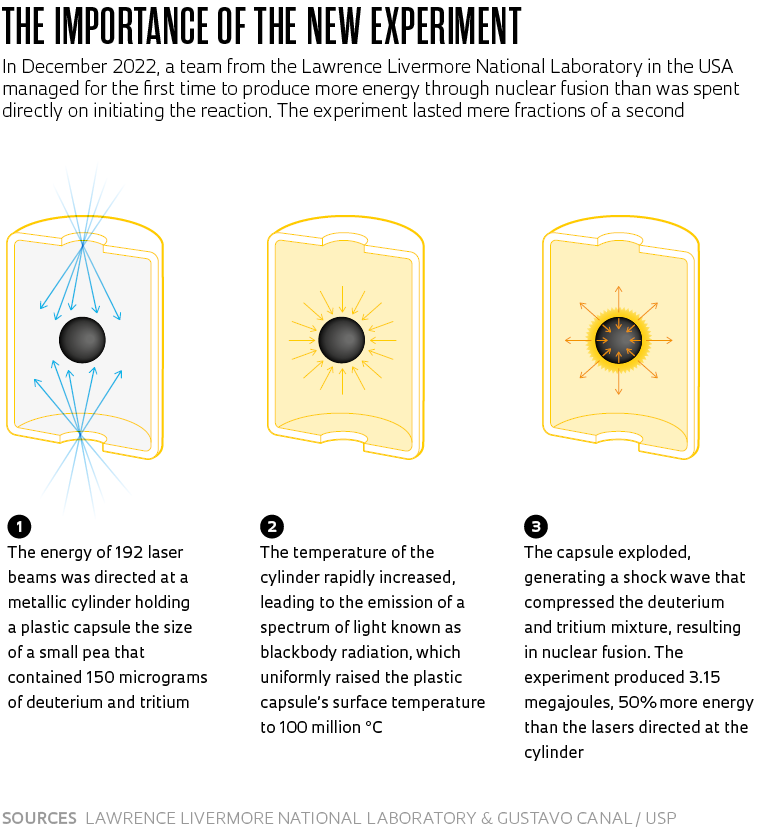
But the 192 laser beams were powered by 300 MJ, almost 100 times more than generated by the fusion reaction. The NIF lab occupies an area the size of three football fields. The lasers travel across this entire space while going through a series of processes, such as amplification and concentration, before reaching the final form in which they hit the deuterium and tritium sample.
“People talk about how this reaction for the first time produced more energy than went into it. But this really depends on how you do the accounting,” said physicist Adam E. Cohen of Harvard University in an interview with The Harvard Gazette. “It’s a little bit like passing water from hand to hand—every step along the way, you lose a little bit. In this case, there was more energy released from the reaction than in the photons in the light that went into compressing and heating this capsule. But if you look at the electrical energy that was used to drive the lasers to produce that light, that was vastly greater than the energy that was released in the reaction.”
For nuclear fusion to occur, the atomic nuclei of deuterium and tritium need to overcome a natural obstacle that prevents them from colliding and fusing: electrostatic force. Also known as Coulomb’s law, this force causes electrically charged particles, such as protons (positive) and electrons (negative), to be attracted to counterparts of the opposite charge and repelled by those of the same charge. Thus, under normal conditions, a deuterium nucleus, which has one proton and one neutron, will be repelled by a tritium nucleus, which has one proton and two neutrons.
But if the two nuclei are squeezed tightly together, they can reach a point where they are so close that the repulsive electrostatic force is overwhelmed by the stronger nuclear force. Nuclear force is what keeps neutrons and protons inside the atomic nucleus. When this extreme proximity occurs, the two lighter nuclei of the deuterium and tritium fuse to generate a heavier nucleus of helium (which has two protons and two neutrons).
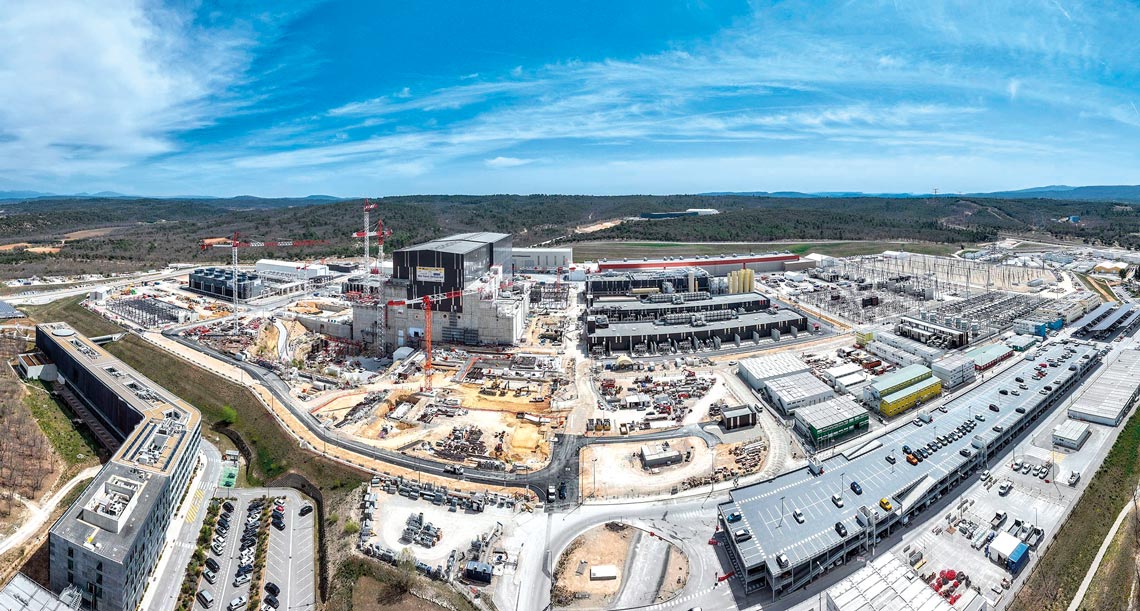
Iter OrganizationConstruction of the world’s largest magnetic confinement nuclear reactor, ITER, in southern FranceIter Organization
Stars perform this process spontaneously. Their gravitational fields are so enormous that the nuclei of the two hydrogen isotopes are compressed naturally, creating ideal conditions for nuclear fusion to occur. “The way to compress atomic nuclei in a lab is to confine them using large magnetic fields, which is what tokamaks do, or powerful lasers, which is what the NIF does,” explains Canal. In fusion reactors, the confining force that pushes the atomic nuclei into each other is lower than the force the Sun’s gravity places on the hydrogen isotopes. The plasma inside the tokamaks therefore has to be heated to 10 times hotter than the temperature at which fusion occurs in stars. The purpose of the higher temperature in the reactors is to compensate for the lower level of compression provided by the magnetic fields in relation to the effect of the gravity in stars.
Almost all nuclear fusion research is carried out in tokamaks of varying sizes—from small ones like USP’s to large ones, like the Joint European Torus (JET) in the United Kingdom. The JET is currently the most powerful tokamak in operation, but it will soon be surpassed by the International Thermonuclear Experimental Reactor (ITER), which will be the largest reactor of this type ever built, backed by seven major partners (the European Union, USA, China, India, Japan, Russia, and South Korea).
Under construction in Cadarache, southern France, since 2010, the ITER will aim to advance the economic and scientific feasibility of producing energy from nuclear fusion. Its objective is to generate 500 megawatts (MW), 10 times more energy than it will need to function. Its total cost is estimated at approximately €20 billion, about three times its initial budget, and it is expected to begin operating in 2025, assuming there are no delays.
Despite being competitors, in a way, of the research carried out at the NIF, the ITER directors applauded the result shared by their American counterparts last December. “When future generations look back on the evolution of fusion energy research, I believe [this experiment] will be recognized as a historic milestone,” ITER Director-General Pietro Barabaschi said in a press release.
Republish